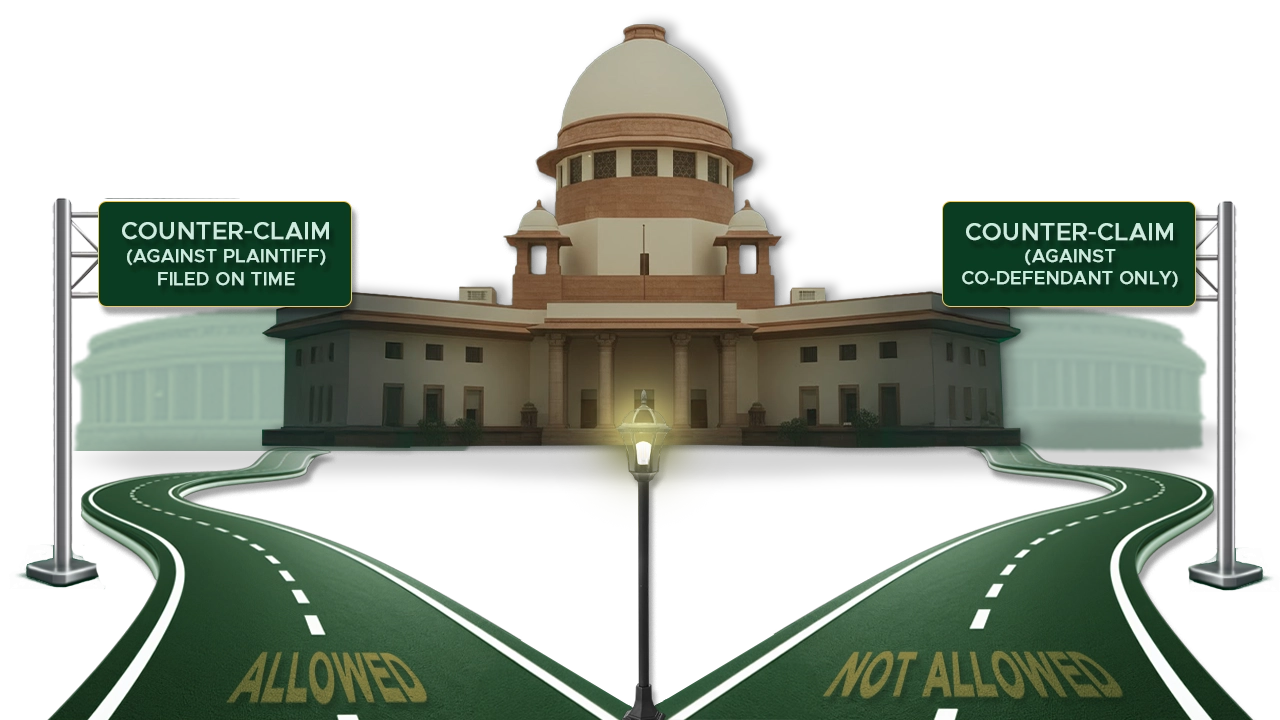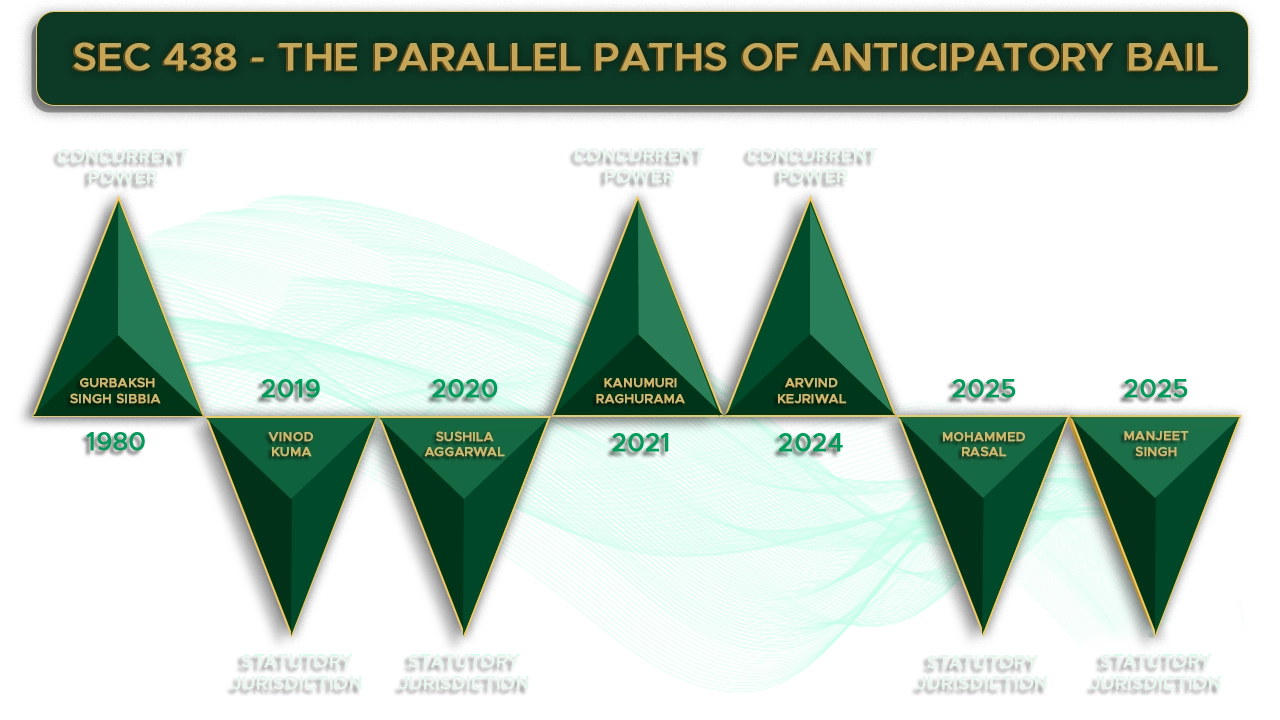Introduction
In a resounding verdict that promises to reshape the landscape of civil litigation in India, the Supreme Court has delivered a landmark judgment to curb the strategic misuse of counter-claims. A bench comprising Justices Pamidighantam Sri Narasimha and Joymalya Bagchi has definitively ruled that a counter-claim cannot be filed after the issues in a case have been framed and, crucially, cannot be directed exclusively against a co-defendant. This pivotal decision, stemming from the case of Rajul Manoj Shah vs. Kiranbhai Shakrabhai Patel1, reinforces the sanctity of procedural fairness and streamlines the judicial process by ensuring that civil trials remain focused and efficient, free from the disruptions of belated and misdirected claims.
The legal dispute originated from a family property case in Ahmedabad, Gujarat, where an appellant filed a suit against her sister-in-law (defendant no.1) and another individual (defendant no. 2) to annul a 2011 agreement to sell and prevent the transfer of joint family property. After the death of defendant no. 1, a court official, the Nazir of the City Civil Court, was appointed to represent the deceased’s interests. Over a year later, defendant no. 2 sought to amend his written statement to include a counter-claim for specific performance of the sale agreement and partition of the property. The trial court dismissed this application, citing significant delay and the principle that a counter-claim cannot be directed solely against a co-defendant. The Gujarat High Court, however, reversed the decision, reasoning that the cause of action for the counter-claim arose only after Nazir was appointed. This High Court decision is the central point of contention that brought the matter before the Supreme Court.
The Supreme Court, in its judgment, meticulously dismantled the High Court’s reasoning, focusing on two fundamental principles of civil procedure. The first point of law revolved around the principle established in Rohit Singh v. State of Bihar2. Citing this precedent, the Court emphasized that a counter-claim, as provided under Order VIII Rule 6A of the Code of Civil Procedure (CPC), must be directed against the plaintiff. While it can incidentally claim relief against a co-defendant, a counter-claim directed solely against a co-defendant is not maintainable. The Court highlighted that allowing such a claim would transform the litigation into an “interpleader suit” between defendants, which is not the purpose of a counter-claim. In the present case, defendant no. 2’s primary claim for specific performance was against the Nazir, who was representing the deceased co-defendant, not against the plaintiff. The claim for partition was also held to be secondary and dependent on the success of the specific performance claim, thus failing for the same reason.
The second, and equally crucial, point addressed the timing of filing a counter-claim. The Supreme Court relied on its earlier decision in Ashok Kumar Kalra v. Wing CDR3., which clarified that while Order VIII Rule 6A CPC does not specify a rigid time limit for filing a counter-claim, it also doesn’t grant an absolute right to file it at any time. The Court reaffirmed that the outer limit for filing a counter-claim is “pegged till the issues are framed.” The rationale is to prevent a “flagrant miscarriage of justice” and to ensure the “principle of speedy justice” is upheld. Allowing a counter-claim years after issues have been framed would disrupt the trial, cause prejudice to the opposing party, and defeat the very purpose of the provision, which is to avoid multiplicity of proceedings. In this case, defendant no. 2 filed the application for a counter-claim two years after the issues were framed and nine years after the suit was instituted. The Court noted that the cause of action had arisen long ago, especially since the plaintiff had challenged the sale agreement back in 2012, putting defendant no. 2 on notice.
Beyond the precedents of Rohit Singh v. State of Bihar and Ashok Kumar Kalra v. Wing CDR., the Supreme Court’s ruling on counter-claims aligns with a broader body of jurisprudence aimed at preventing procedural abuse and ensuring the swift and fair resolution of disputes.
In Jag Mohan Chawla v. Dera Radha Swami Satsang4, the Supreme Court clarified that a counter-claim is a cross-suit that can be filed on a cause of action that is distinct from the plaintiff’s original claim. The only condition is that the cause of action for the counter-claim must have accrued before the time fixed for filing the written statement. This judgment expanded the scope of counter-claims beyond merely being a set-off in money suits, as was the case before the 1976 amendment to the Code of Civil Procedure (CPC).
Similarly, in Damodhar Narayan Sawale (D) through LRs v. Tejrao Bajirao Mhaske & Ors5., the Supreme Court re-emphasized that a defendant cannot raise a counter-claim against a co-defendant, as this would involve adjudicating a dispute that is not central to the original suit between the plaintiff and the defendant.
While the Supreme Court’s decisions in Satyender and Ors. v. Saroj and Ors6. did not establish new legal precedent on counter-claims, the case is illustrative of how lower courts can err by allowing counter-claims that are beyond the scope of Order VIII Rule 6A CPC. In that case, the trial court had wrongly decreed a counter-claim over property that was not related to the plaintiff’s original suit, a decision that was later set aside, affirming that the ambit of a counter-claim is not unlimited.
Conclusion
By setting aside the Gujarat High Court’s order, the Supreme Court has re-established a vital element of procedural discipline in civil litigation. This judgment serves as a clear reminder to litigants and legal practitioners that the Code of Civil Procedure, including provisions like Order VIII Rule 6A, is designed to ensure procedural fairness and timely resolution of disputes. It sends a strong message that procedural provisions cannot be manipulated to introduce new, unrelated disputes late in the trial, thereby protecting plaintiffs from procedural surprises and ensuring that the trial remains focused on the original cause of action.
Citations
- Rajul Manoj Shah vs. Kiranbhai Shakrabhai Patel 2025 INSC 1109
- Rohit Singh v. State of Bihar 2006 (12) SCC 734
- Ashok Kumar Kalra v. Wing CDR. AIRONLINE 2019 SC 1525
- Jag Mohan Chawla v. Dera Radha Swami Satsang 1996 (5) JT 428
- Damodhar Narayan Sawale (D) through LRs v. Tejrao Bajirao Mhaske & Ors Civil Appeal No.930 of 2023 (@ Special Leave Petition (C) No.10747 of 2016)
- Satyender and Ors. v. Saroj and Ors. CIVIL APPEAL NO. 4833 OF 2022
Expositor (s): Adv. Archana Shukla






